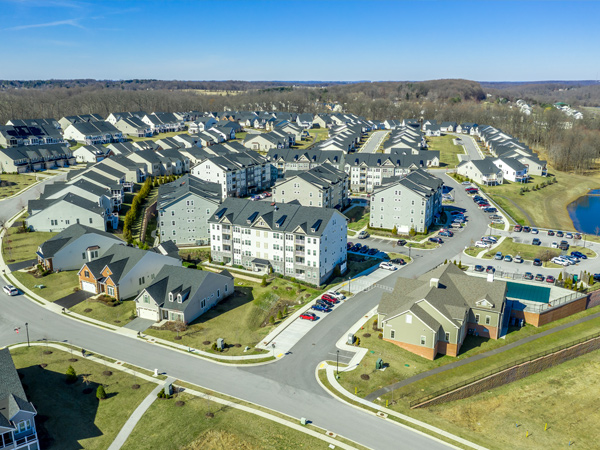
The American Housing Survey (AHS) is largest, most comprehensive national survey of housing in the United States. The survey is sponsored by HUD and is collected by the U.S. Census Bureau (Census). The AHS is a longitudinal survey of housing units, meaning that it follows housing units, not households, over time. The survey collects data on structural housing characteristics, housing costs, housing quality, and demographic characteristics of households living in AHS sample units. The survey has been collected since 1973 and currently is collected every 2 years in odd-numbered years. The most recent data available are from 2019. Census completed data collection for the 2021 AHS at the end of September 2021. HUD’s Housing and Demographic Analysis Division in the Office of Policy Development and Research (PD&R) manages the survey.

The American Housing Survey provides HUD and the public with data that can be used to analyze changes in housing and households over the past 50 years. Photo credit: shutterstock.com/tokar
Before 1973, the only available information about the U.S. housing inventory came from the decennial censuses, one-time sample surveys, and a survey of vacant housing units. The federal government recognized the need for information on the general condition of the nation’s housing to determine the need for, as well as the effectiveness of, government-sponsored programs. In 1940, Census began collecting the Census of Housing, which the agency conducted with the population census every 10 years until 2000. The idea for the AHS arose in response to turmoil in American cities in the 1960s; the survey was intended to help HUD more frequently assess current housing conditions and create programs to achieve its goals. Title V of the Housing and Urban Development Act of 1970 authorized programs of "research, studies, testing, and demonstrations relating to the missions and programs of the Department.” As a result, HUD received funding that paved the way for the AHS in 1972, and PD&R, the HUD office responsible for the AHS, was established in 1973.
With HUD funding, Census launched the first AHS in 1973 with a sample of 60,000 housing units. The survey, originally named the Annual Housing Survey, was conducted annually from 1973 to 1981. After 1981, the survey became a biennial survey because of budget constraints, and its name was changed to the American Housing Survey. The national sample was redesigned in 1985 based on data from the 1980 decennial census, with a base sample size of approximately 47,000 housing units. In 1997, the AHS moved from paper- to computer-based questionnaires. In 2015, the AHS was redesigned, and a new representative national sample was drawn using the Census Master Address File as a sampling frame with additional oversampling of selected metropolitan areas and HUD-assisted housing units; in addition, the total sample size increased to approximately 115,000 housing units. The AHS will use this sample until Census draws a new sample in 2025 or later. With data from 1973 to the present, the AHS provides HUD and the public with data that can be used to analyze changes in housing and households over the past 50 years.
Then and Now: Housing Quality, Costs, Conditions, and Remodeling in the AHS, 1973 to 2019
The 1970 census collected information on two indicators of housing quality that provided a limited account of housing quality in the United States: the presence of complete plumbing and persons per room. Three years later, the 1973 Annual Housing Survey collected data on a wider range of housing indicators that provided a more complete picture of the state of housing quality. The Lines & Numbers brief in the January 1976 HUD Challenge publication highlighted some of these housing quality indicators.
Although question wording has changed since the 1973 survey, the AHS has continued to collect information on many of these housing quality indicators. Exhibit 1 compares three housing quality indicators highlighted in the 1976 brief with results from the 2019 AHS.
The number of housing units that were occupied the previous winter and had their heating equipment break down decreased by 2.05 million units, and the share of these units decreased 5.8 percent, between 1973 and 2019. However, the percentage of occupied housing units with leaking roofs and housing units with open cracks or holes did not change significantly during this period.
Exhibit 1. Housing Quality, 1973 and 2019 (Units in Thousands)